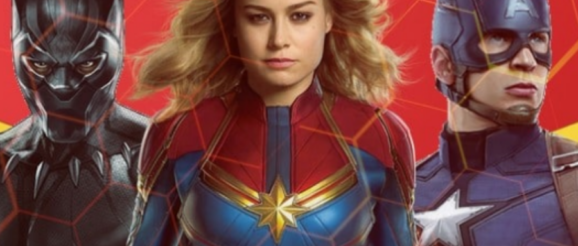Marvel Studios’ Incredible Success Fueled by 3-Step Model of Innovation – Here’s How We Apply It at Six Seconds and How You Can Apply It In Your Organization • Six Seconds

1. Select for experienced inexperience
How this works at Marvel: Of the 20 directors Marvel has hired since 2008, only 5 had prior experience directing a movie in the superhero genre. They weren’t random people off the street, of course; they were all critically acclaimed directors. But most had expertise in other genres – horror, comedy, espionage, Shakespeare – and had worked on indie films with much smaller budgets. This decision is intentional. Marvel wants directors with different perspectives and complementary skill sets, creating a sort of Venn diagram with Marvel. On the one end is the director’s unique knowledge and skills, whether that’s character development, a certain cultural perspective, or funny dialogue. On the other side is Marvel’s expertise with special effects, understanding the original characters and storylines, and of course marketing. Marvel makes clear to the directors: “Be you, bring the unique knowledge you have, and we’ll help with the CGI stuff.”
How it’s applied at Six Seconds: Similarly to how Marvel hires directors, Six Seconds seeks out partners with deep expertise in a particular sector or industry when it creates a custom emotional intelligence assessment tool. The partners bring a depth of knowledge about a particular topic or industry, whether it’s sales (EQFIT Sales Profile), organizational change (SEI-LTC), or trust (Trust Style Inventory). They combine their expertise with Six Seconds’ wealth of knowledge about psychometric assessments and building tools. “It’s about building on and extending the range of the SEI in a compelling way, to meet specific market needs,” says Tomasso Procicchiani, Six Seconds’ lead Research & Development engineer who spearheads Six Seconds’ creation of custom EQ tools with Preferred Partners around the globe. “Innovation requires a delicate balance between continuity and novelty, and our process reflects that.”
How you can use it: How could you use the expertise of others, either within your organization or outside of it, to turn a fresh eye on another part of your organization? For example, the next time you’re troubleshooting an issue in your operations department, why not invite a strategic thinker from your marketing team to join the meeting? Or if you love the look of someone else’s website, invite the designer to work with someone on your team to redesign your website.
2. Leverage a stable core
How this works at Marvel: To balance the new voice and style of its directors, Marvel holds on to a small percentage of its crew from film to film. This provides a sense of continuity to their products and creates an established community for new voices to join. Without the stable core, Marvel’s films would risk losing the familiarity that serves as a foundation for any innovation to flourish. “Organizations that preserve the core, revitalize the periphery, and understand relationship networks can enable renewal, dynamism, and flexibility,” says Harvard Business Review. “They can attract an influx of new ideas while enabling continuity by keeping the overall organizational structure almost intact.”
How it’s applied at Six Seconds: How much do you know about correlations and psychometric validity? If you’re like me, not much. But Six Seconds’ CEO Josh Freedman developed the SEI, Six Seconds’ flagship emotional intelligence assessment and the baseline for custom tools, with Italian business professor Max Ghini in 2006. Prochicchiani, Six Seconds’ lead Research & Development engineer who interned with Ghini in college before moving to Six Seconds’ global office, brings a wealth of experience himself. These two, along with Project Manager John Dodds, make up the stable core of the team that makes custom assessment tools with partners from all over the world, from Nassau, Bahamas to Sydney, Australia. It’s the expertise and continuity they provide that allows new ideas to come in without losing structure.
How you can use it: Innovation can’t happen in a vacuum. While new people provide fresh ideas, vibrancy, and needed energy, think about the core, established people you want on a new team to provide that essential background knowledge and grounding to the new team. They can help vet the value of new products and ideas, as well as having an idea of the logistics behind them.
